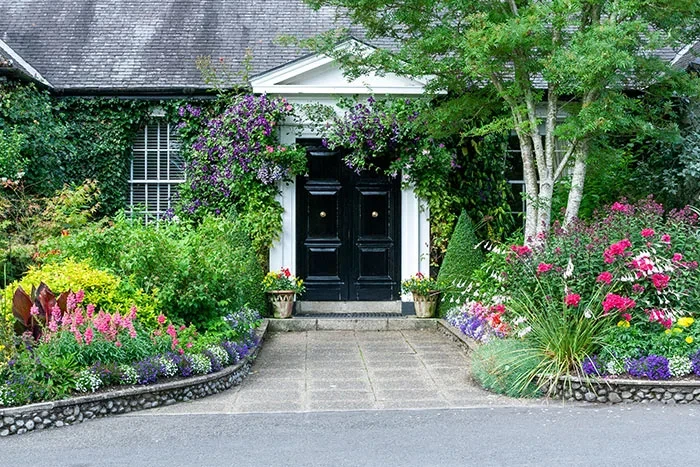We've all heard the advice to plant ornamental plants in odd numbers and in groups of at least three. Here's why it's a good rule—and why it's okay to break the rule.

Formal elements such as the pots flanking the door and the alternating white and purple edging shown here benefit from even numbers of plants because they add symmetry. Meanwhile the groups of plants within the bed look more natural planted in odd numbers. Once a planting has matured like this one, though, it is difficult to tell whether those groups of like plants were planted in odd or even numbers.
An odd number of plants can be arranged in an irregular cluster, which looks more natural than a straight line or a block shape. Using at least three plants ensures the group will have some substance.
But there are times when you can't follow this rule. Perhaps you're working in a space that won't fit three of the desired plant. Maybe you're sticking to a budget and buying one more plant would put you over.
In such situations, just keep in mind the habit of the perennial in question. Unless it has a strong, distinct form, such as an agave, there's a good chance that in a few years (or even sooner) you won't be able to tell how many plants you originally placed in the grouping. They will pretty much blend into one mass. So go ahead and plant four, six or eight.
Even-numbered plantings have a purpose, too. These can work wonderfully in formal plantings that call for symmetry. A pair of identical plants can also highlight a key feature; for instance they may flank a piece of artwork or a gateway.
As for "planting in ones," this too can work. Just don't be self-conscious about it. Make that single plant a true specimen by giving it a noticeable position, such as next to a gate or doorway, in the very center of the border or at the end of a path. Be deliberate about the placement, and it won't look random, out of place or lost.
You might also consider using other materials to fill out a group of plants. For example, plant one mounded perennial and add two rounded stones beside and behind it. Or plant two perennials and place a pot of similarly colored annuals among them. With a little imagination and strategy, you can make a dynamic scene with whatever odds and ends you have at hand.
To learn more about designing a garden, we recommend The Layered Garden by David Culp, Garden Design Workbook by John Brookes and The Flower Gardener's Bible by Lewis and Nancy Hill.